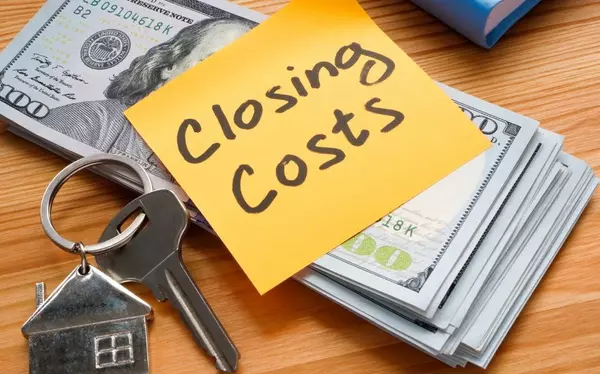Is Housing Still Affordable for First-Time Homeowners?

Is Housing Still Affordable for First-Time Homeowners?
Introduction
The dream of owning a home is a cornerstone of the American Dream, representing stability, security, and a sense of accomplishment. However, in recent years, the affordability of housing has become a topic of concern, particularly for first-time homebuyers. In this article, we'll explore the current landscape of the housing market and examine whether homeownership is still within reach for those embarking on this journey for the first time.
Key Takeaways:
Affordability Challenges
The housing market's affordability concerns pose significant challenges for first-time homebuyers, affecting their ability to fulfill the American Dream of homeownership.
Diverse Perspectives
First-time homebuyers encompass a diverse group, including young professionals, newlyweds, and individuals transitioning from renting to owning, each facing unique challenges and considerations in the housing market.
Dynamic Market Trends
Fluctuating housing prices, interest rates, and supply and demand dynamics contribute to the volatility of the housing market, impacting affordability for prospective homebuyers.
Financial Considerations
Income levels, job market stability, student loan debt, credit scores, and upfront expenses such as down payments and closing costs are critical factors influencing the affordability of homeownership.
Government Support and Strategies
Government programs, alternative financing options, negotiation tactics, shared housing arrangements, and investing in emerging neighborhoods offer avenues for increasing affordability and realizing the dream of homeownership despite challenges in the housing market.
Definition of First-Time Homeowners
First, let's clarify who exactly falls into the category of first-time homeowners. Typically, these are individuals or families who have not owned a home within the past three years. They may be young professionals eager to establish roots, newlyweds seeking to start a family, or individuals transitioning from renting to owning for the first time. Regardless of their circumstances, first-time homebuyers often face unique challenges and considerations as they navigate the complexities of the housing market.
Overview of the Current Housing Market
The housing market is a dynamic ecosystem influenced by a myriad of factors, including economic conditions, demographic trends, and government policies. In recent years, the market has experienced significant fluctuations, characterized by rising home prices, fluctuating interest rates, and shifting supply and demand dynamics. While certain regions have seen robust growth and soaring property values, others have faced stagnation or even decline. Understanding these trends is crucial for prospective homebuyers, particularly those entering the market for the first time.
Importance of Affordability in Homeownership
Affordability lies at the heart of the homeownership equation, shaping the decisions and aspirations of prospective buyers. Simply put, a home must be within a buyer's financial means for homeownership to be a viable option. Affordability encompasses various factors, including the upfront costs of purchasing a home, such as the down payment and closing costs, as well as ongoing expenses like mortgage payments, property taxes, insurance, and maintenance. For first-time homebuyers, who may have limited savings and financial resources, achieving affordability is often a primary concern.
The State of Housing Affordability
Trends in Housing Prices
One of the foremost concerns for prospective homebuyers, particularly first-timers, is the trajectory of housing prices. Over recent years, housing prices have experienced notable fluctuations, driven by factors such as supply and demand dynamics, economic growth, and market speculation. While some regions have witnessed steady appreciation, others have encountered more volatile shifts, posing challenges for affordability.
Impact of Interest Rates on Affordability
Interest rates play a pivotal role in shaping the affordability of homeownership. With mortgage rates fluctuating in response to broader economic conditions and central bank policies, first-time buyers face the dual challenge of securing favorable financing terms while navigating rising home prices. Even marginal fluctuations in interest rates can have substantial implications for monthly mortgage payments, influencing the overall affordability equation.
Availability of Affordable Housing Options
In the quest for homeownership, accessibility to affordable housing options remains a paramount consideration. While certain markets boast a plethora of affordable properties catering to first-time buyers, others grapple with limited inventory and escalating prices. Affordable housing initiatives and development projects aim to address this disparity, yet the gap between supply and demand persists, particularly in urban centers and high-demand areas.
Regional Disparities in Affordability
Housing affordability is not a uniform phenomenon, as regional disparities exert a profound influence on accessibility to homeownership. Metropolitan areas, characterized by robust job markets and cultural amenities, often command premium prices, placing homeownership out of reach for many aspiring buyers. Conversely, rural communities may offer more affordable alternatives, albeit with trade-offs in terms of employment opportunities and lifestyle amenities.
Factors Affecting Affordability for First-Time Homeowners
For first-time homebuyers, achieving affordability in the housing market can be a daunting task influenced by various factors. Let's delve into some key considerations that impact the ability of first-time homeowners to purchase their dream home.
Income Levels and Job Market Stability
Income levels and job market stability are foundational determinants of affordability for first-time homebuyers. A steady and sufficient income stream provides the financial foundation necessary to support mortgage payments and other homeownership expenses. Economic factors such as unemployment rates, wage growth, and industry trends can significantly influence the ability of individuals to afford homeownership.
Student Loan Debt and Other Financial Obligations
Many first-time homebuyers grapple with the burden of student loan debt and other financial obligations, which can affect their ability to qualify for a mortgage and afford homeownership. High levels of debt may impact debt-to-income ratios, making it challenging to meet lenders' requirements for loan approval. Managing and reducing existing debt burdens is essential for improving affordability and increasing eligibility for mortgage financing.
Credit Score and Access to Financing
A strong credit score is essential for first-time homebuyers seeking access to favorable financing options and competitive interest rates. Lenders use credit scores to assess borrowers' creditworthiness and determine the terms of mortgage loans. Maintaining a positive credit history, minimizing debt, and timely repayment of existing obligations are key strategies for improving credit scores and enhancing affordability in the housing market.
Down Payment Requirements and Closing Costs
Down payment requirements and closing costs represent significant upfront expenses for first-time homebuyers. Saving for a sizable down payment can be challenging, particularly for those with limited financial resources. Understanding and planning for these expenses are essential for budgeting and ensuring affordability throughout the homebuying process.
Market Conditions and Competition
Market conditions and competition can also impact affordability for first-time homebuyers. In seller's markets characterized by high demand and limited inventory, prices may be inflated, making it more difficult to find affordable housing options. Conversely, buyers may find greater affordability in buyer's markets with ample inventory and less competition.
Government Programs and Initiatives
Government programs play a vital role in facilitating homeownership for first-time buyers, offering a range of assistance initiatives to support aspiring homeowners. These programs aim to alleviate financial barriers and promote affordability in the housing market.
Overview of Government Assistance Programs
Government assistance programs encompass a variety of initiatives designed to assist first-time homebuyers in achieving their homeownership goals. These programs may include financial assistance, educational resources, and counseling services to empower buyers throughout the homebuying process.
First-Time Homebuyer Grants and Loans
First-time homebuyer grants and loans provide financial assistance to eligible individuals or families purchasing their first home. These programs may offer down payment assistance, closing cost assistance, or subsidized mortgage rates, making homeownership more accessible for first-time buyers.
Tax Incentives and Credits for Homebuyers
Tax incentives and credits for homebuyers can help reduce the financial burden of purchasing a home. These incentives may include deductions for mortgage interest, property taxes, and eligible home improvement expenses, providing valuable tax savings for homeowners.
Affordable Housing Development Initiatives
Affordable housing development initiatives aim to increase the supply of affordable housing options for first-time buyers. These initiatives may include partnerships between government agencies, nonprofit organizations, and private developers to create affordable housing developments and rehabilitate existing properties.
Strategies for Increasing Affordability
Navigating the path to homeownership can be challenging, especially for first-time buyers facing affordability constraints. Fortunately, several strategies can help prospective homeowners enhance their affordability and achieve their goal of owning a home.
Budgeting and Financial Planning
Budgeting and financial planning are essential for first-time homebuyers looking to maximize affordability. Creating a detailed budget that accounts for all income, expenses, and savings goals can help buyers identify areas where they can cut costs and allocate more funds toward their down payment and other homeownership expenses.
Exploring Alternative Financing Options
Alternative financing solutions can provide new opportunities for affordable homeownership.aThis may include researching loan programs tailored to first-time buyers, such as FHA loans or USDA loans, which offer low down payment requirements and flexible eligibility criteria.
Negotiating with Sellers and Lenders
Negotiating with sellers and lenders can help first-time buyers secure more favorable terms and pricing. This may involve negotiating the purchase price of the home, requesting seller concessions to cover closing costs, or negotiating the terms of the mortgage loan with lenders to secure a lower interest rate.
Considering Co-Ownership or Shared Housing Arrangements
Considering co-ownership or shared housing arrangements can significantly reduce the financial burden of homeownership. By splitting costs with a roommate, family member, or friend, first-time buyers can lower their monthly expenses and increase their purchasing power in the housing market.
Investing in Up-and-Coming Neighborhoods
Investing in up-and-coming neighborhoods can be a strategic way to find affordable housing options. These areas often offer lower property prices compared to more established neighborhoods, providing first-time buyers with the opportunity to buy into the market at a more affordable price point while potentially benefiting from future appreciation.
Conclusion
In conclusion, the road to homeownership is filled with ups and downs, triumphs and setbacks. However, by drawing inspiration from the success stories of others, learning from their challenges, and heeding their advice, aspiring first-time homeowners can navigate the path to homeownership with confidence and determination. As they embark on this exciting journey, it's essential to remember the importance of education, preparation, and perseverance. With continued efforts to improve housing affordability and support aspiring homeowners, the dream of owning a home remains within reach for all.
Categories
Recent Posts










